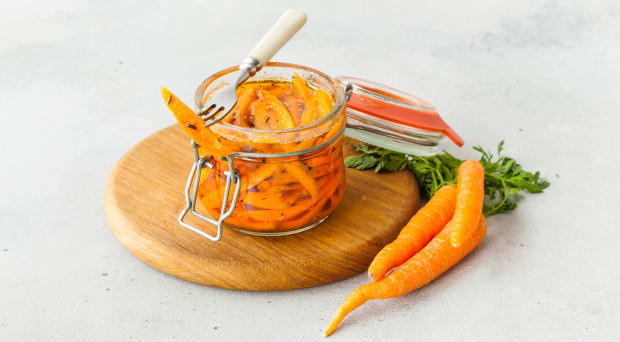- Like
- SHARE
- Digg
- Del
- Tumblr
- VKontakte
- Flattr
- Buffer
- Love This
- Save
- Odnoklassniki
- Meneame
- Blogger
- Amazon
- Yahoo Mail
- Gmail
- AOL
- Newsvine
- HackerNews
- Evernote
- MySpace
- Mail.ru
- Viadeo
- Line
- Comments
- Yummly
- SMS
- Viber
- Telegram
- JOIN
- Skype
- Facebook Messenger
- Kakao
- LiveJournal
- Yammer
- Edgar
- Fintel
- Mix
- Instapaper
- Copy Link
First, the Basics on Fermenting. Yogurt and other fermented foods are generally created through lacto-fermentation: “lacto” refers to Lactobacillus, beneficial bacteria that convert sugars into lactic acid, a natural preservative that inhibits the growth of harmful bacteria. Those Lactobacillus are responsible for many of the health benefits we associate with fermented foods. And the process of fermentation improves digestibility and nutrient availability of foods; for example, turning cabbage into kimchi increases its cancer-fighting glucosinolate compounds believed to fight cancer.
Related: 5 Steps to Successful Fermentation
Simple, but Important Rules on Fermented Foods
• Start with a squeaky-clean environment. Run your supplies through the dishwasher, or wash them well by hand with hot, soapy water.
• Use fresh, organic ingredients and filtered, not tap, water; chlorine can interfere with the fermentation process.
• Temperature is critical; in general, room temperature—around 65 to 72 degrees—is about right for most kinds of fermentation. If your house is cooler, park your fermenting foods on top of the refrigerator; it’s generally warm, and keeps them out of the way.
• Check your foods at least once a day for shorter ferments or every day or two for longer-duration ferments. Be sure fruits or vegetables are completely submerged in brine to keep air out of the mixture and prevent mold growth.
• Keep an eye out for signs of oxygen exposure. These include brown spots or other discolorations, mold or slime on the surface of the mixture, or an offensive, putrid odor. If you’re concerned your mixture has gone south, don’t be afraid to pitch it and start over.
Ready to try DIY fermentation? Here 4 simple recipes to get you started.
Moroccan-Spiced Carrots
Get the recipe here.
Garlicky Radish and Napa Kimchi
Get the recipe here.
Ginger-Pear Chutney
Get the recipe here.
Herbed Vegan Brie
Get the recipe here.


